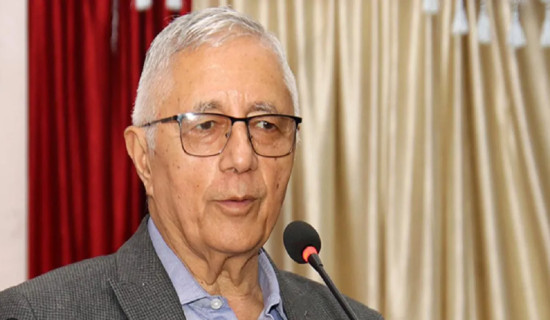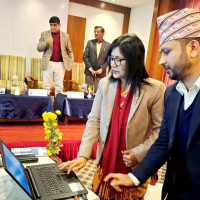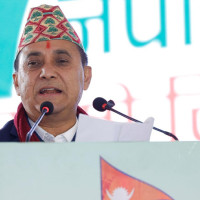- Monday, 12 January 2026
Addressing Population Issues: A Call For Gender Equality
The issue of population and its management is of significant importance, especially for governments in developing countries. It encompasses various dimensions, including birth rate management, reduction in death rates, balanced population distribution, integration of population in development, and the promotion of gender equality and reproductive health. While developing nations face numerous challenges in effectively and sustainably managing their populations, Nepal, as a developing country, has made notable strides in population management, gender equality, and reproductive health. However, despite the progress, there are still prevalent harmful practices regarding gender equality and women's empowerment that urgently require attention and action. Addressing these practices is crucial for creating an environment of equitable and prosperous development, where individuals can thrive and contribute to the overall well-being of society.
The recently published Population Census of Nepal 2021 reveals several key findings about the country's population dynamics. Nepal's total population stands at 29.2 million, with a sluggish population growth rate of 0.92 percent per year. The Total Fertility Rate (TFR) is recorded at 2.1 children per woman, indicating a replacement-level fertility rate. The sex ratio stands at 96 males for every 100 females, whereas this ratio in children younger than 10 years old is 109 per 100 females. Interestingly, there has been a reduction in family size, with an average of 4.3 members per family. Moreover, the population is witnessing a demographic shift with an increasing ageing population and a growing active population. Urban areas account for over two-thirds of the total population, resulting in higher population density. Currently, Nepal's population density is 198 individuals per square kilometre. Encouragingly, the census reports an improvement in literacy rates, with an overall rate of 76.2 per cent, while women's literacy stands at 69.4 percent. There has been a significant decline in the maternal mortality rate, dropping to 151 deaths per 100,000 live births, indicating positive progress in maternal healthcare. These findings provide valuable insights into Nepal's evolving population landscape and serve as a basis for informed policymaking and resource allocation to address the unique challenges and opportunities associated with population management.
When examining the population dynamics of Nepal, it becomes evident that several noteworthy issues require attention and resolution. There is an imbalance in population concentration, with certain regions experiencing higher population density than others. Secondly, Nepal's population growth rate is moderately slow, indicating a need to explore the factors contributing to this trend in the future. There is a slight imbalance in the sex ratio of recently born children, suggesting a need to address potential underlying causes and promote gender equality. High rates of migration and absenteeism further impact population dynamics, warranting comprehensive measures to understand and address the associated challenges. Also, there is a noticeable trend towards a shrinking child population and an expanding elderly population, emphasising the importance of planning and providing adequate support for the ageing population. Despite advancements, gender discrimination persists and demands continued efforts to ensure equality and promote women's empowerment. These key issues in Nepal's population dynamics require focused attention and strategic interventions to create a more balanced and inclusive society.
As the world observed Population Day on the 11th of July, it is essential to acknowledge that population concerns remain centred on girls and women in developing countries like Nepal. Despite progress in various areas, girls and women continue to face unique challenges related to population dynamics in these regions. Factors such as cultural norms and values, limited resources, and gender inequality contribute to their vulnerability and limited access to essential services. Issues such as reproductive health, education, economic opportunities, and social empowerment are interlaced with population concerns. Recognising and addressing the specific needs and rights of girls and women in Nepal is crucial for achieving sustainable development, reducing gender disparities, and ensuring their overall well-being and empowerment.
The prioritisation of women's issues in population management is of utmost significance, particularly in the context of Nepal, where numerous women and girls continue to suffer as victims. This unfortunate reality persists due to a combination of factors, including insufficient awareness, entrenched cultural practices that perpetuate harm, and inadequate enforcement of laws. The prevalent challenges encompass caste discrimination, gender inequality, harmful traditions such as Chhaupadi (menstrual victimisation), gender-biassed sex selection and unsafe abortion, rape, polygamy, witch accusations, and male-centric preferences. Addressing and combating these major issues is crucial to empowering women, protecting their rights, and fostering a more equitable and just society.
Empowerment of girls and women is crucial for addressing population issues on both local and global scales. When girls and women are empowered, they have greater control over their reproductive choices and are more likely to make informed decisions about family planning. This leads to a reduction in unintended pregnancies, and expected fertility rates, and ultimately helps curb population growth. Additionally, empowered girls and women are more likely to pursue education and economic opportunities, which not only enhances their well-being but also has a positive ripple effect on the entire community.
Furthermore, when women are empowered, they tend to have fewer children and invest more in each child's well-being, leading to better health outcomes and a higher quality of life for both individuals and communities. By focusing on girls' and women's empowerment, we can address population issues sustainably and holistically, promoting social progress, gender equality, and a more balanced and harmonious world.
Population management issues involve a range of concerns, and Nepal has experienced noticeable shifts in its population structure over time. However, maintaining a balanced population distribution between different geographic areas is also a matter of concern. In Nepal, there has been a greater emphasis on addressing gender-related aspects of population management. This has required a collaborative effort involving multiple stakeholders, such as the government, non-governmental organisations (NGOs), and civil society. The shared aspiration is to achieve prosperity, and this can only be realised through the concerted endeavours of all these entities working together towards common goals.
(The author is a Joint Secretary at the Ministry of Health and Population.)










-(1)-original-thumb.jpg)






